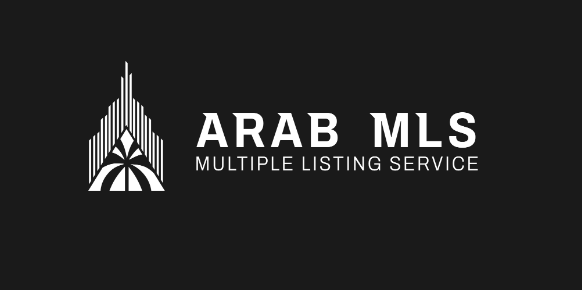The property market, once largely confined by local borders, has undeniably expanded into a vast global arena. Technological advancements and increasing interconnectedness have fostered an environment where a property in Paris might appeal to a buyer in Poughkeepsie, and an investment opportunity in Bangalore could captivate a portfolio manager in Berlin. This burgeoning international engagement, while presenting immense opportunities, also introduces complex challenges, not least among them the pervasive issue of language barriers within the digital bedrock of real estate: the Multiple Listing Service (MLS) platforms. For real estate professionals navigating this intricate landscape, understanding and mitigating these linguistic hurdles is paramount to fostering seamless transactions and building lasting trust.
The Expanding Horizon of International Real Estate
The motivations driving cross-border property transactions are manifold. Individuals seek vacation homes, relocation for work or retirement, or diversification of investment portfolios. Companies expand their operations globally, necessitating commercial property acquisitions in new territories. This surge in international interest has transformed the traditional role of a local real estate agent. No longer solely focused on their immediate community, discerning professionals now recognize the vast potential of catering to an international clientele, often engaging with foreign buyers and sellers who possess varying degrees of English proficiency, if any at all.
This shift has been significantly amplified by digital tools. Virtual tours, high-definition photography, and interactive floor plans transcend physical distances, allowing prospective buyers to explore properties across continents from the comfort of their homes. However, while visual media helps bridge the physical gap, the textual information accompanying these listings – the descriptions, the disclosures, the agent remarks – remains predominantly rooted in a single language, typically that of the local market.

The Linguistic Maze Within Property Listing Systems
At the heart of the global real estate transaction lies the MLS, or its equivalent international property database. These sophisticated systems serve as central repositories of property data, enabling agents to list properties and search for suitable options for their clients. Yet, the very architecture of these platforms, designed primarily for domestic use, often struggles when confronted with the myriad languages of a global clientele.
Consider the detailed property descriptions that are the lifeblood of a listing. These narratives frequently contain highly specialized terminology, local idioms, and subtle nuances that are integral to understanding a property’s true value and appeal. Terms like “easement,” “fixture,” “covenant,” or “zoning regulations” carry precise legal weight within a particular jurisdiction, and their accurate conveyance is critical. Beyond the legal lexicon, descriptive phrases alluding to local amenities, community characteristics, or even architectural styles can be highly culturally specific. A “cozy nook” in one language might evoke an entirely different image or emotional response in another.
Decoding Cultural and Contextual Nuances
The challenge of linguistic diversity extends far beyond mere vocabulary. A direct, word-for-word translation, often facilitated by automated tools, frequently falls short because it neglects the rich tapestry of cultural and contextual nuances that underpin effective communication in real estate. Legal terms, as previously mentioned, rarely have perfect one-to-one equivalents across different jurisdictions; their meaning is deeply embedded in the specific legal framework of a country. A phrase that sounds perfectly innocuous in one language might carry unintended negative connotations or misrepresent a crucial aspect of a property in another.
Technology’s Double-Edged Sword
In an age dominated by digital solutions, the immediate inclination is to leverage technology to overcome communication barriers. Automated translation tools, such as popular online services, have become readily accessible, offering instantaneous conversions of text. For casual correspondence or basic information retrieval, these tools can be remarkably helpful. They provide a quick preliminary understanding of foreign text and can facilitate initial exchanges between individuals who do not share a common language. For a glance at a property description in a foreign tongue, they offer a starting point.
However, the application of such technology in the high-stakes environment of real estate transactions reveals significant limitations. While machine learning has advanced considerably, these algorithms often struggle with the specific jargon, idiomatic expressions, and subtle contextual cues that are so prevalent in property listings and legal documents. They may fail to accurately translate legal terminology, misinterpret the precise meaning of a nuanced phrase, or even introduce errors that fundamentally alter the intended message. Furthermore, automated translators cannot grasp the emotional undercurrents, the cultural subtext, or the specific intentions behind a particular statement, all of which are crucial for effective negotiation and building client confidence. The risk of miscommunication, particularly when sensitive personal or financial information is involved, remains a significant concern, often outweighing the convenience offered by these tools.
The Indispensable Role of Human Expertise
Given the inherent complexities and potential pitfalls of purely automated solutions, the human element remains undeniably critical in bridging linguistic divides within the global real estate market. Bilingual real estate professionals, armed with fluency in multiple languages and an intrinsic understanding of local market dynamics, serve as invaluable conduits. Their ability to not only translate words but also interpret cultural nuances, explain local customs, and navigate specific regulatory frameworks is unparalleled. They can discern the subtle meaning behind an agent’s remark, clarify complex legal terminology, and tailor marketing messages to resonate effectively with a specific international audience.
Crafting a Seamless Global Real Estate Experience: Strategies for Bridging Divides
To truly cultivate a global real estate market that transcends linguistic barriers, a multifaceted approach is required. This involves integrating systematic solutions within MLS platforms, fostering greater human capacity, and leveraging technology judiciously.
Firstly, standardized multilingual data input within MLS platforms is a foundational step. Rather than merely allowing for a single-language entry with an optional, often imperfect, automated translation, platforms could be designed from inception to accommodate and encourage simultaneous data input in multiple key languages. This would ensure that core property details, amenities, and agent remarks are meticulously entered by human professionals in various relevant languages, guaranteeing accuracy and cultural relevance from the outset.
Secondly, the integration of professional human translation services directly within MLS workflows can significantly enhance clarity. For high-stakes components like legal disclaimers, complex property history, or detailed financial breakdowns, a direct link to vetted professional translation agencies could be established. This allows agents to easily commission accurate, certified translations of crucial documents, ensuring compliance and clarity for all international parties involved.
Lastly, fostering collaborative networks and formalized referral systems among real estate professionals across different countries can create a truly global ecosystem. When agents can confidently refer international clients to trusted, culturally competent counterparts in other regions, it streamlines the process, ensures specialized local knowledge is always available, and enhances the overall client experience. Such networks reinforce the human element, ensuring that linguistic and cultural barriers are overcome through established professional relationships and shared expertise.

The Truly Integrated Multilingual MLS
Looking ahead, the vision for global MLS platforms is one where linguistic diversity is no longer a formidable barrier but merely another filter through which property data can be accessed and understood. Imagine a future where an international buyer can search for a property in their native language, and the system intelligently translates all relevant property details, agent remarks, and even accompanying legal documents with contextual accuracy, providing a seamless and intuitive experience. This future would see artificial intelligence serving not as a replacement for human understanding but as an advanced assistant, facilitating real-time, nuanced translations that preserve the integrity and cultural specificity of the information. The goal is a truly integrated, universally accessible global property database where information flows freely, fostering greater transparency, efficiency, and trust in every international real estate transaction.
Building Bridges in the Global Property Market
Overcoming language barriers in the global real estate market is not simply about translating words; it is about building bridges of understanding, fostering trust, and enhancing efficiency in an increasingly interconnected world. For real estate professionals, acknowledging and actively addressing these linguistic hurdles presents a significant competitive advantage. Those who invest in multilingual capabilities, integrate sophisticated translation solutions, and cultivate cultural intelligence will be best positioned to capture the vast opportunities presented by the burgeoning international property market. Ultimately, by systematically dismantling these communication obstacles, the industry can move closer to realizing a truly borderless real estate landscape, where property information is universally accessible, and every transaction, regardless of the parties’ origins, is characterized by clarity, confidence, and mutual comprehension.
Frequently Asked Questions
1. Q: Why are language barriers such a significant issue in global real estate transactions?
A: Precise communication is paramount in real estate for legal contracts, detailed property descriptions, and building client trust. Misinterpretations due to language differences can lead to costly errors, legal disputes, or failed deals, hindering seamless international property exchanges.
2. Q: What specific types of information on an MLS platform are most impacted by language differences?
A: Detailed property descriptions, legal disclosures, agent remarks, local zoning regulations, and specific financial terms are highly vulnerable to mistranslation or misinterpretation due to nuanced terminology and cultural context.
3. Q: Can I just rely on free online translation tools like Google Translate for foreign listings?
A: While helpful for initial understanding, these tools often struggle with specialized real estate jargon, legal terms, and cultural idioms. Relying solely on them for critical information can lead to inaccuracies and potential liabilities in a professional context.
4. Q: How do cultural nuances affect communication beyond just literal translation in real estate?
A: Cultural differences impact marketing appeals, negotiation styles, preferred amenities, and even perceptions of value. A direct translation might miss the underlying cultural context, potentially alienating clients or misrepresenting property features.
5. Q: What is the most effective strategy for real estate professionals to overcome language barriers?
A: The most robust solution combines human expertise, such as bilingual agents, professional real estate translators, and cultural consultants, with judicious use of technology, including multilingual MLS inputs and immersive visual content.













